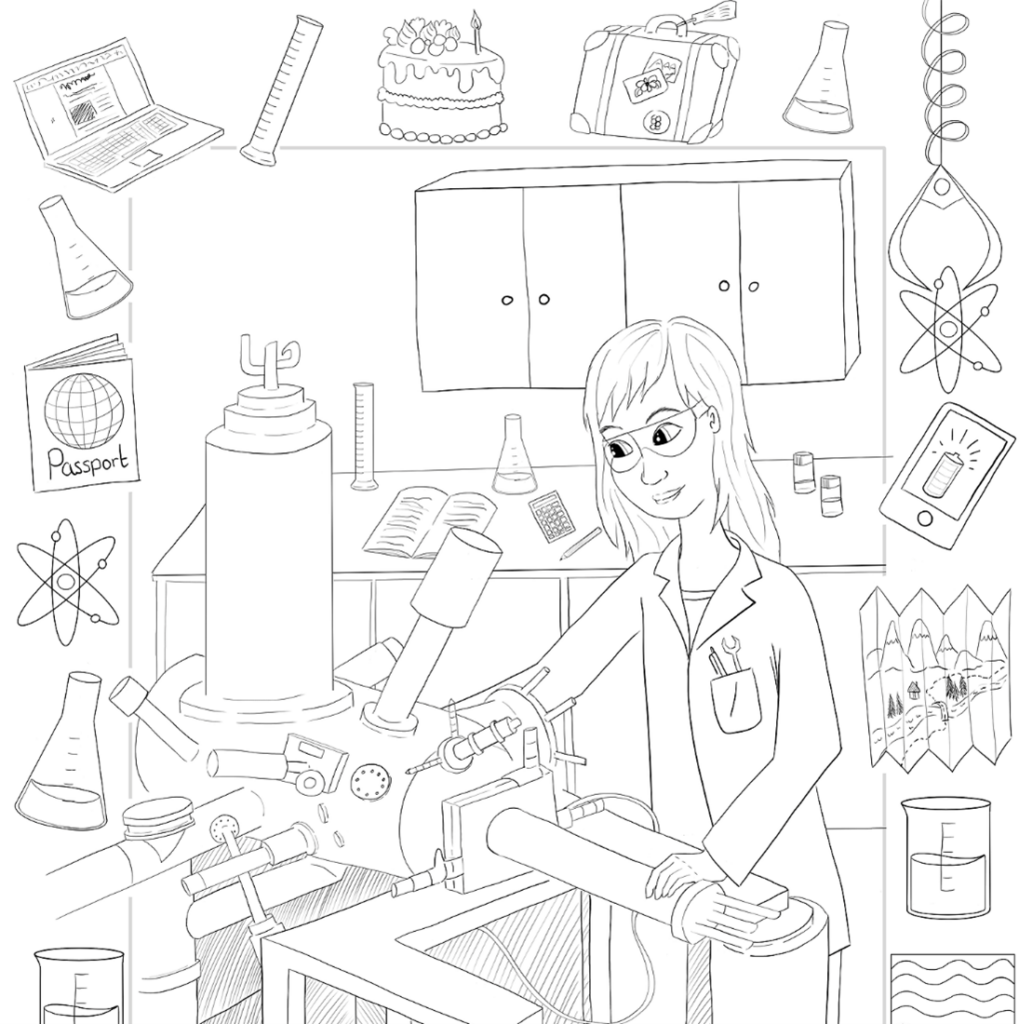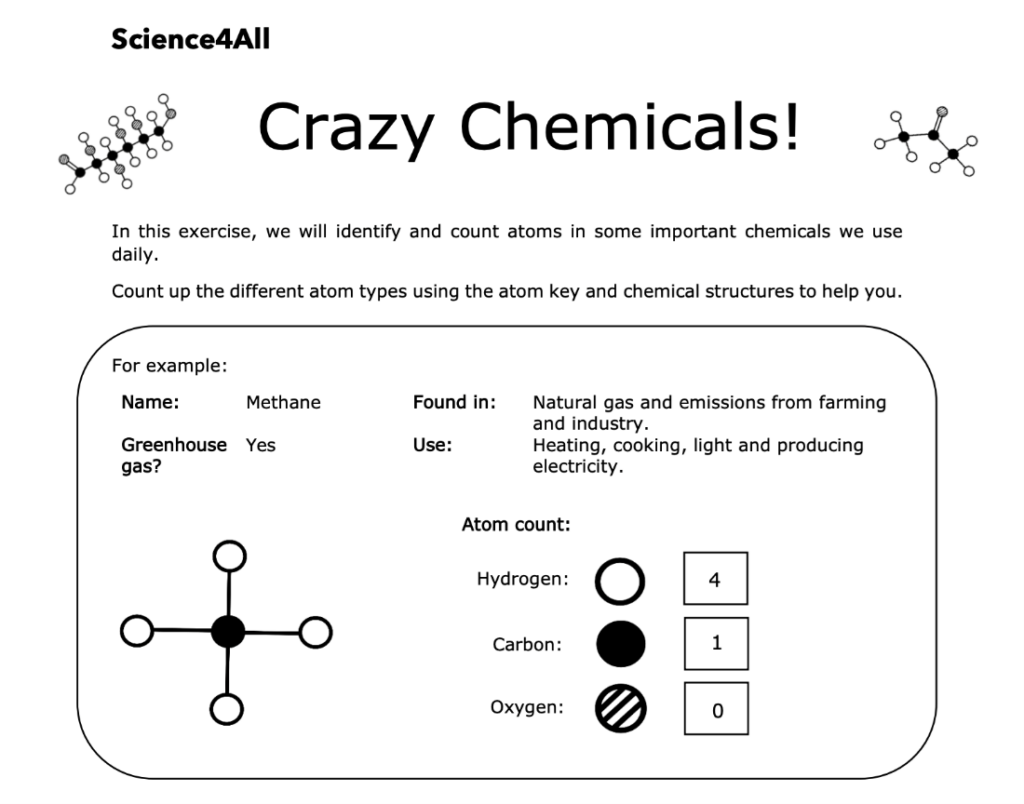Science4All: Exploring science through colour
What if children could discover the world of science in a new way – through colour?
Dr Danica Pinto, Lecturer in the School of Chemistry, has created Science4All – a website that hosts colouring pages and teaching resources to inspire young people to engage with STEM. Beyond being fun for young audiences, colouring is a good way for children to improve fine motor skills, concentration, creativity, and more. It is also an inventive teaching tool to introduce students to different projects and methods in chemistry research.
The website’s ten colouring pages are based on researchers connected to the School of Chemistry at the University of St Andrews. Illustrated by Dr Julia Pirson, each depicts the scientist at work with symbols from their life and research surrounding them. Accompanying each page are kid-friendly descriptions of their work, hobbies, favourite subjects in school, and even their favourite scientists. One researcher, Dr Yi-Ying Sung, works with a scanning tunnelling microscope to rearrange atoms, which she likens to a claw machine picking up toys. In her spare time, she likes to bake and travel. Dr Sung’s colouring page features an illustration of her with her microscope, surrounded by cupcakes, suitcases, and a drawing of a claw machine. These colouring pages showcase the scientists’ personalities and research in lively, fun ways to highlight that anyone can be a scientist, inviting children to relate to the researchers they learn about and imagine themselves in the world of science.

Science4All also hosts teaching resources, developed by Pinto and collaborators Abbie Forsyth and Kathryn Darby, that further detail the work of each researcher in accessible language. Along with these explanations, a wide range of materials – including diagrams, videos, and infographics – are provided for both children and educators. For example, to help students further understand Dr Aamod Desai’s work with sodium-ion batteries, the teaching resource directs students to an at-home experiment to make batteries out of coins, with videos about how batteries work and how to make them more sustainable.
The resources also include worksheets for children to further explore concepts in chemistry like chemicals, colours, measurement, and lab safety. In ‘Crazy Chemicals!’, students learn to identify atoms and recognize the structure and uses of everyday chemicals, such as glucose and propane. Like the colouring pages, this worksheet is accompanied by an index of definitions of key concepts, such as atoms and greenhouse gases, and more information about the featured chemicals.

Science4All’s diverse range of resources introduces complex scientific concepts to young people in fun and accessible ways, inspiring the next generation to develop further interest in STEM and feel more open to the world of science.